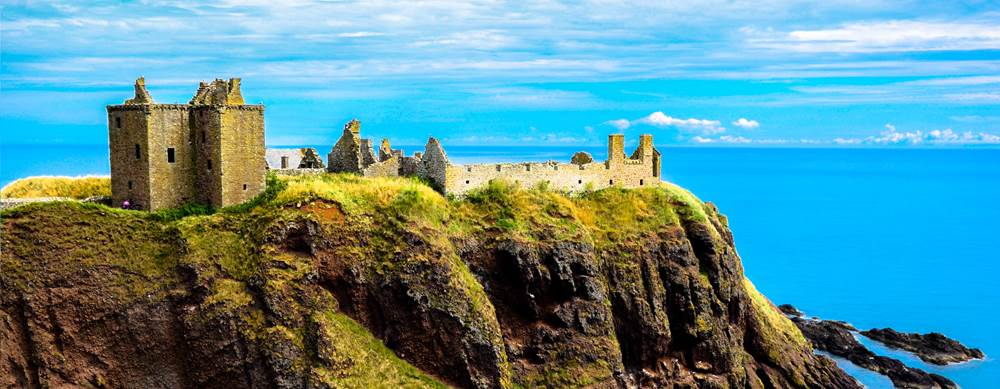
Five castles in North East Scotland you should visit
With more castles per acre in Aberdeenshire than anywhere else in the UK, there are almost too many to choose from, when it comes to deciding a day out. We’ve put together some of the most iconic and beautiful castles and ruins from the county, as well as a few hidden gems.
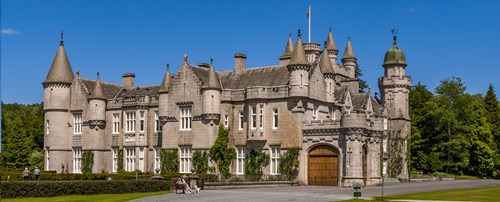
Balmoral Castle
No castle list would be complete without Balmoral – the Scottish home of the royal family.
It was purchased by Prince Albert in 1852 for Queen Victoria and is actually only just over 160 years old – with the original castle being thought too small for the family to live there. The Castle as we know it today was completed in 1856. Whilst many may think the Castle as the residence of the Crown when they choose to take a rest, it is actually a working estate, with grouse moors, farmland and animals making up a large part of the estates everyday success.
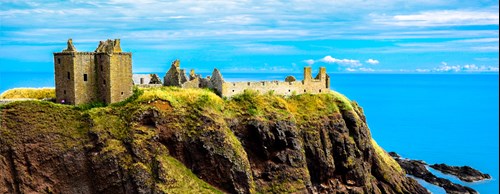
Dunnottar Castle
The rocky ruins of Dunnottar Castle sit on the north-east headland of Scotland, about two miles from neighbouring Stonehaven. The ruins were once the home of the Earls Marischal, one of the most powerful families of the area.
It is perhaps best known however, for its historical significance. Both Mary Queen of Scots and William Wallace graced the Castle with their presence, whilst it also hid the Scottish Crown Jewels, the ‘Honours of Scotland,’ from the invading army of Oliver Cromwell in the 17th century.
In 1925 the Castle was bought by the Pearson family and restored before opening the Castle to the public. It remains one of the most beautiful ruins in Scotland, with its naturally fortified position and unforgettable views of the North Sea.
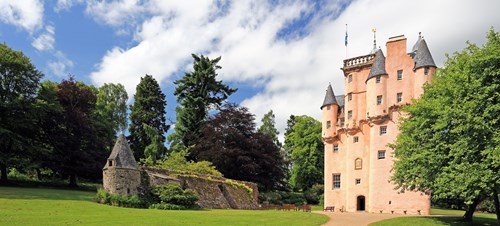
Craigievar Castle
Remind you of anything? Rumour has it, Craigievar Castle was the inspiration for Walt Disney’s fairy-tale Sleeping Beauty Castle.
The pinkish hue of the stone comes from lime harling, with a much-needed update in 2010 helping it really stand out from the rolling hills between which it sits. Not only does the hint of pink give the Castle a fairy-tale vibe – but it also houses its own ghost.
The large estate that surrounds the Tower is perfect for a daytrip, with magnificent woodland and stunning trees surrounding the area and amazing views of Bennachie too.
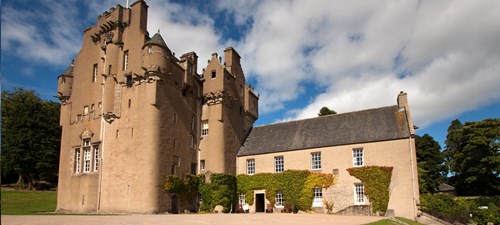
Crathes Castle
This 16th-century castle has sat just outside Banchory for almost 500 years. The land was given to the Burnett of Leys family by King Robert the Bruce. With over 530 acres of woodlands and field, the leafy surroundings make for a great walk on a sunny day.
But it’s inside and underneath the Castle where its true excitement lies. The Castle is home to several significant portraits and fascinating original painted ceilings.
During an excavation in 2004 a series of pits believed to date back to about 10,000 years ago were uncovered. The site was discovered when unusual crop marks were seen from the sky. This discovery was later analysed in 2013 and is believed to actually be the world’s oldest known lunar calendar.
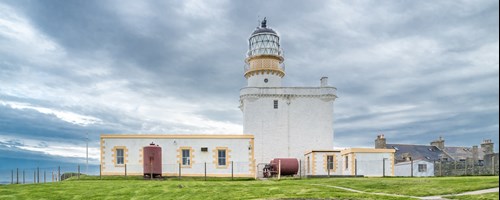
Kinnaird Castle
Our final choice is not a Castle in the traditional sense of the word. You might know it better as Fraserburgh Castle or Kinnairdshead Castle. The 16th-century Castle was later converted in 1787 for use as the Kinnaird Head Lighthouse – the first to be lit in Scotland by the Commissioners of Northern Lights. It now houses the Museum of Scottish Lighthouses. A small three-storey tower is also located nearby known as the Winetower. Dating back to the 16th century it likely gained its name through being used as a store. It is said that in the cave below, one of the Fraser family imprisoned his daughter’s boyfriend. She then jumped from the roof of the tower, with the red paint on the rocks said to illustrate her blood. According to the locals, she haunts the tower to this day…
Did You Know: Stairs in castles always turn clockwise. This meant that invading armies were at a severe disadvantage, as most people are right handed – they would struggle to use their ‘sword arm’. The stairs were often at awkward and varying heights. If you used the castle every day you would learn them easily, invading armies however, could be easily tripped or fooled into thinking they were all the same height!

